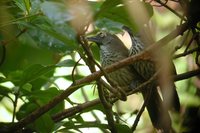|
| Query: bird | Result: 2736th of 32675 | |
Chestnut-rumped Babbler - Stachyris maculata

| Resolution: 676x449
File Size: 71566 Bytes
Date: 2004:04:02 20:45:23
Camera: E990 (NIKON)
F number: f/2.6
Exposure: 10/272 sec
Focal Length: 97/10
Upload Date: 2008:07:20 15:41:47
|
|
|

